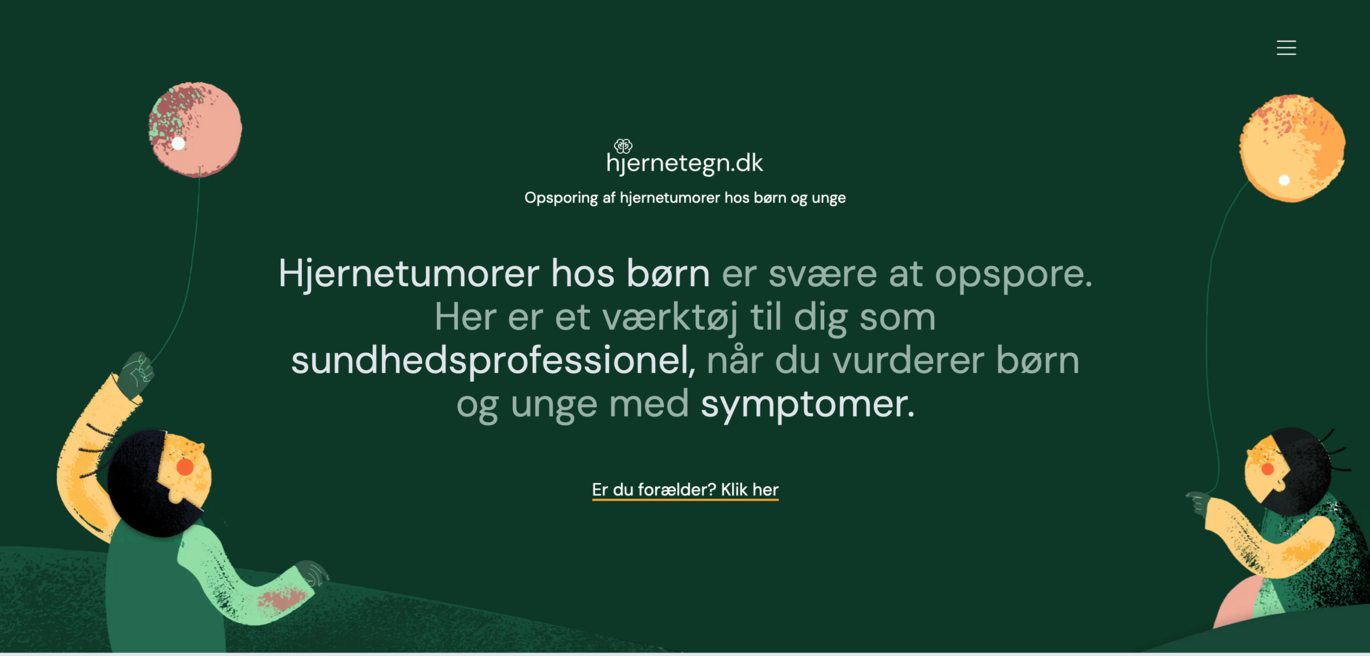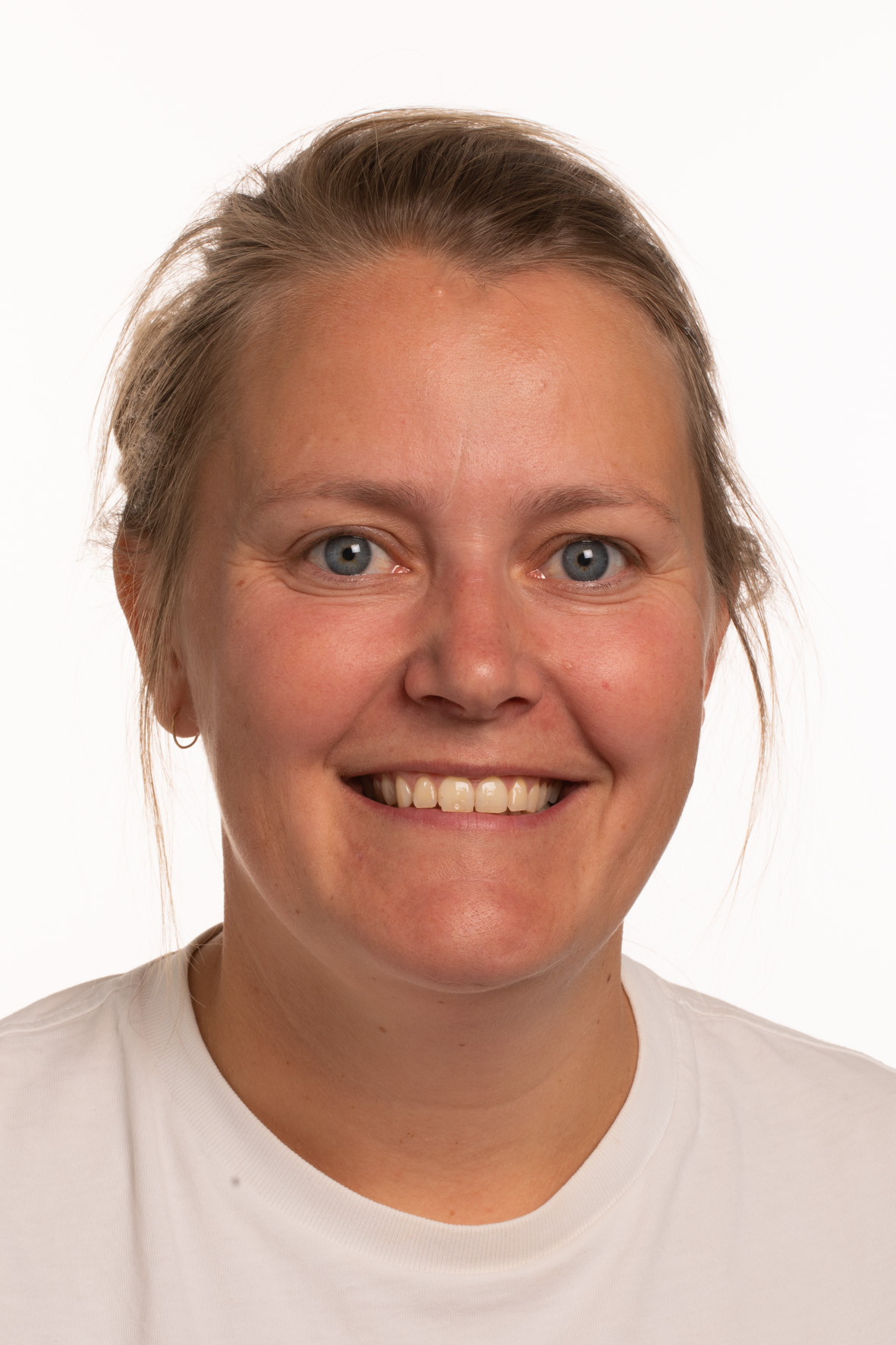Hjernetegn.dk to help early diagnosis of children with brain cancer
A new website created as part of a PhD project at will help healthcare professionals detect signs of brain tumours in children and adolescents earlier. One of the goals of the website is to reduce the risk of long-term complications related to treatment.


Each year, approximately 50 children between the ages of 0 and 17 are diagnosed with a tumour in the brain or spinal cord. The highest proportion of cases are children aged 0-4 years. However, many of the children have symptoms of a tumour long before diagnosis, says PhD student at The Department of Clinical Medicine, Kathrine Synne Weile. Along with with paediatric oncologists across the Danish regions, she has developed the website hjernetegn.dk as part of her PhD project:
"Some children have symptoms of a brain tumour months or even years before being diagnosed. The symptoms are often atypical, varied, and sometimes the child has only a single symptom. This means additional clarification could be needed when there’s doubt about whether to proceed with a diagnostic investigation," she says.
Hjernetegn.dk is primarily intended for general practitioners, paediatricians and ophthalmologists, but also for other health professionals who come in contact with a child with symptoms of a possible brain tumour. 80 percent of children who develop brain cancer survive. However, almost 70 percent of survivors suffers from severely debilitating long term complications. Early detection is therefore likely to impact the children's quality of life after treatment, explains Kathrine Synne Weile:
"Delays in diagnosis can lead to more pervasive illness and thereby more extensive treatment, which we presume increases the risk of delayed complications after treatment is complete. By providing additional support for healthcare professionals, we hope to reduce the time between the first symptom to diagnosis, and we hope faster treatment will reduce debilitating late complications in children who will hopefully live a long life after cancer."
Many parents know how easy it is to panic after Googling their children’s symptoms. And Kathrine Synne Weile is well aware that parents may stumble across her website. Therefore, the website has a section explaining why hjernetegn.dk is not intended for them.
"It’s important to us that the site is targeted at healthcare professionals who can assess the symptoms from a professional perspective. But we’re well aware that concerned parents might find their way to the website. That's why we've created a subpage for them explaining how rare brain cancer in children really is and what to do and who to contact if they're worried," she says.
A whole new world for research communication
A PhD project usually ends as a scientific article in a respected academic journal. Translating her knowledge into such a specialised website has been an exciting and substantial challenge, says Kathrine Synne Weile."It's a whole new world. The project is different in the sense that it’s almost an information campaign targeted at a very specific group of people. There are many stakeholders, and identifying where we can implement a tool so that it ultimately benefits patients has been hard work. You can almost divide the process in two; defining and building a relevant tool, and then preparing a dissemination strategy to ensure that the tool becomes visible to the target group."
In fact, the challenge now is to translate all this hard work behind hjernetegn.dk into a scientific article, and she continues:
“It’s a difficult format. I’m trying to write a cookbook with the recipe for an undertaking with so many details that might look straightforward to some, but where every word has been weighed and measured, and it’s important that these nuances are included. But we’ll produce a publication that’ll hopefully inspire similar health-promoting initiatives for other specialties and target groups.
And even though Hjernetegn.dk is up and running, work on the site hasn’t stopped,” says Kathrine Synne Weile.
"We hope that hjernetegn.dk will become the preferred tool for confirming whether symptoms indicate a brain tumour. The website will be updated regularly with new information.”
Hjernetegn.dk is partly based on a large study that mapped the diagnostic intervals and referral patterns for children and adolescents diagnosed with a brain tumour in Denmark. Kathrine Synne Weile therefore hopes eventually to follow up on the study by analysing data to see if the website has impacted the diagnosis time for children and adolescents
For more go to www.hjernetegn.dk
Contact
-
PhD student Kathrine Synne Weile
Aarhus University, Department of Clinical Medicine - Department of Paediatrics
Email: kathrineweile@clin.au.dk
Phone:+45 29279265